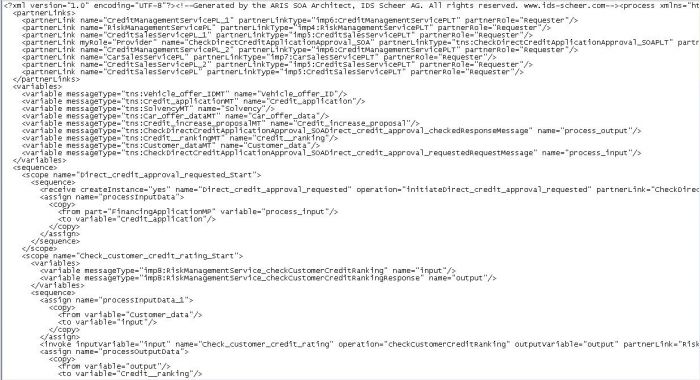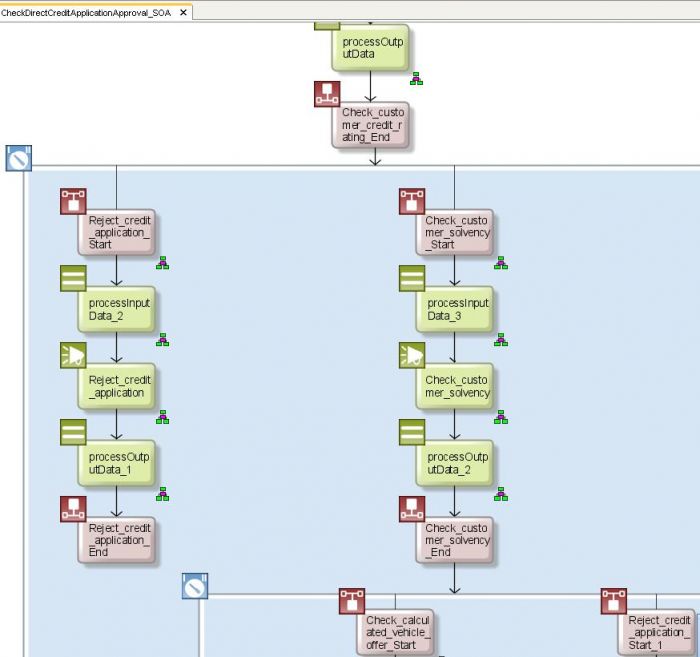BPEL overview
The Business Process Execution Language (BPEL) is used to describe business processes as a series of activities implemented and executed by a web services. It is an XML-based language that was initiated by IBM, BEA Systems and Microsoft in 2002. OASIS released it as a standard specification in 2004. Similar to other higher-level programming language, BPEL allows for specifying complex control flows with variable handling, error handling, transaction handling. BPEL scripts are uploaded to an orchestration server (process engine) where they get deployed and executed.
BPEL & ARIS
BPA tools like ARIS offer graphical editors to describe a BPEL-process visually in a process model. Graphical representation of a BPEL process reduces complexity and increases transparency of the process flow. And, for sure, using ARIS also means you are not simply drawing a nice picture but save the BPEL process in a modeling repository. This allows for integrating BPEL diagrams into the overall process architecture, to analyze process models, and to export the graphical model into a BPEL XML-Script.
In the BPM community there is an ongoing heated debate about BPEL vs. BPMN as both describe business processes in an executable format that can be deployed on a process engine.



